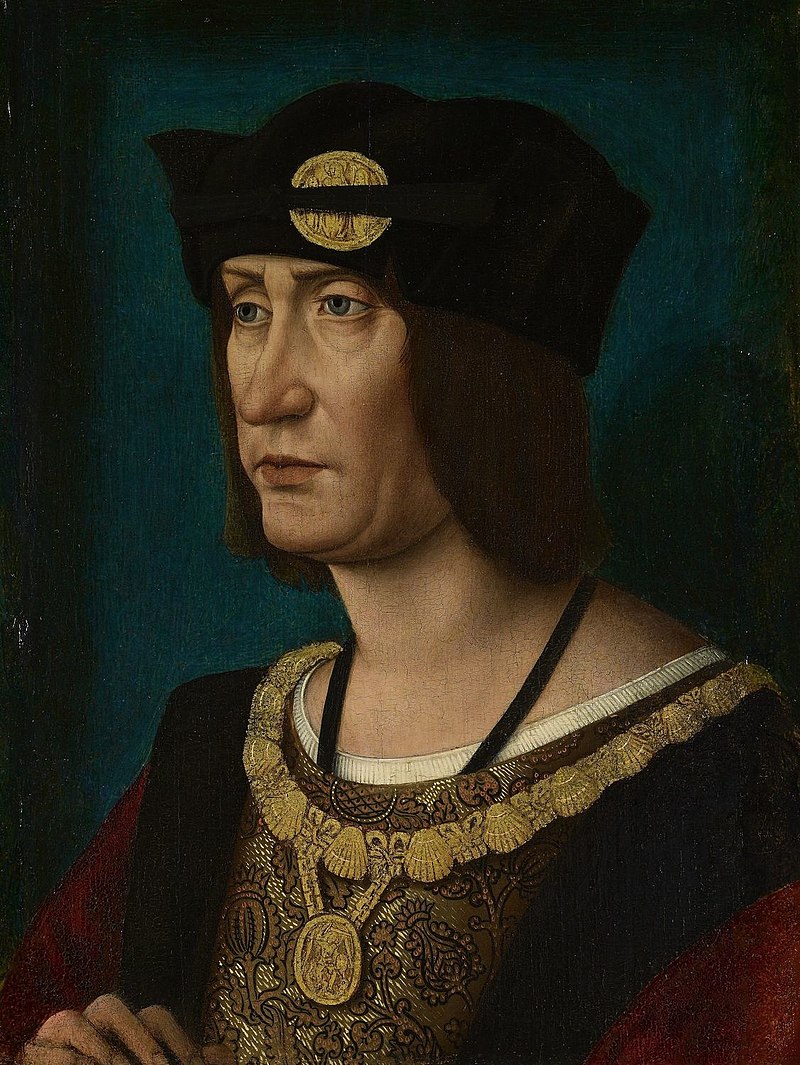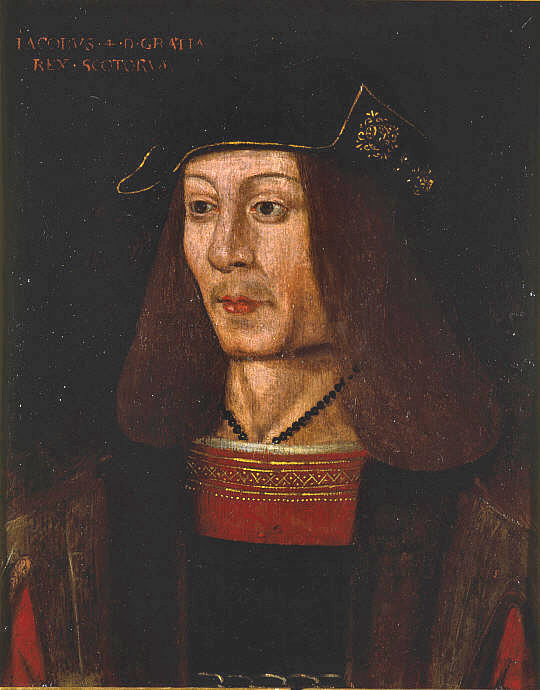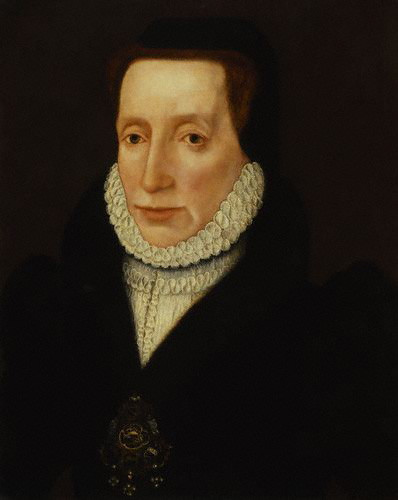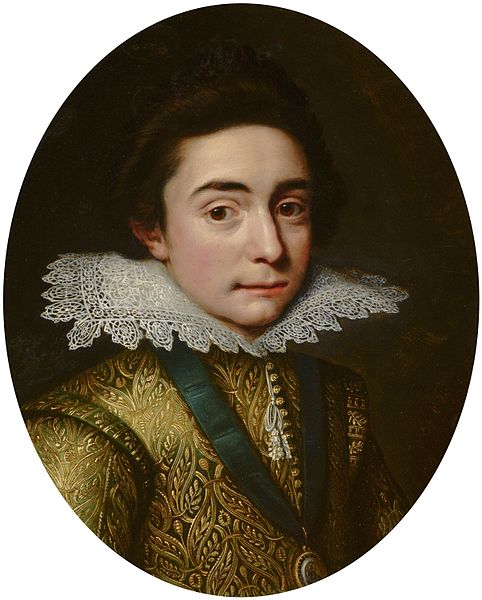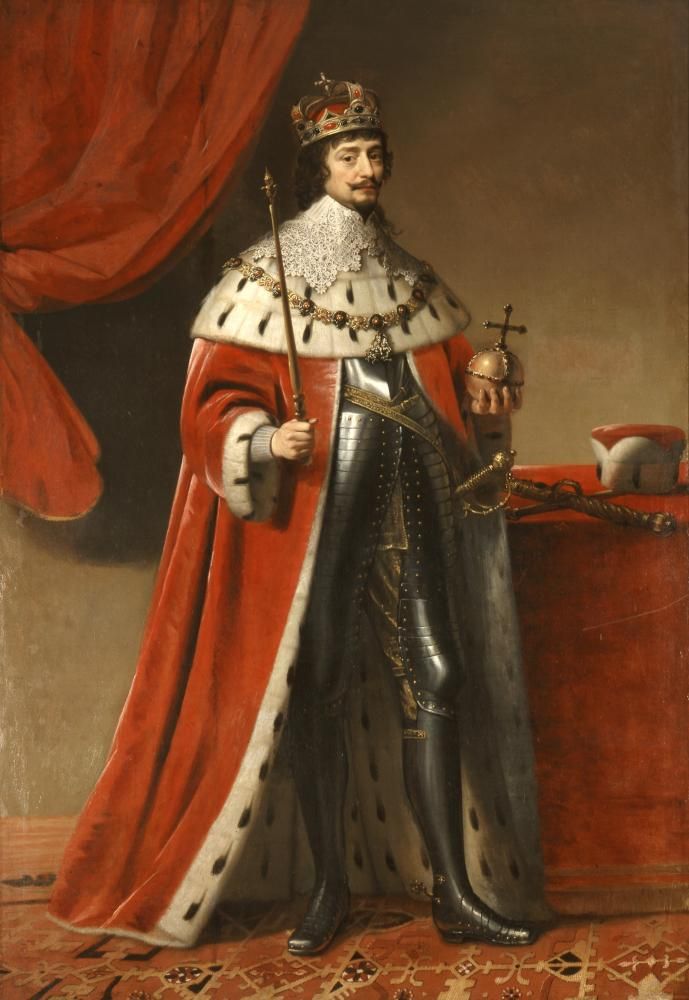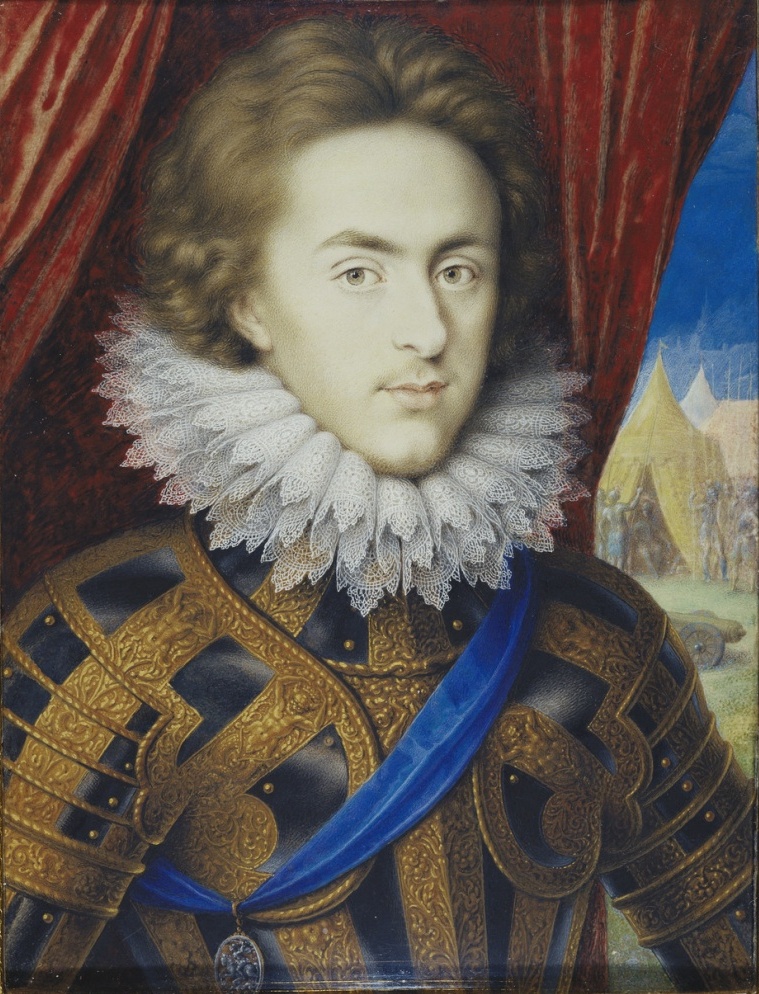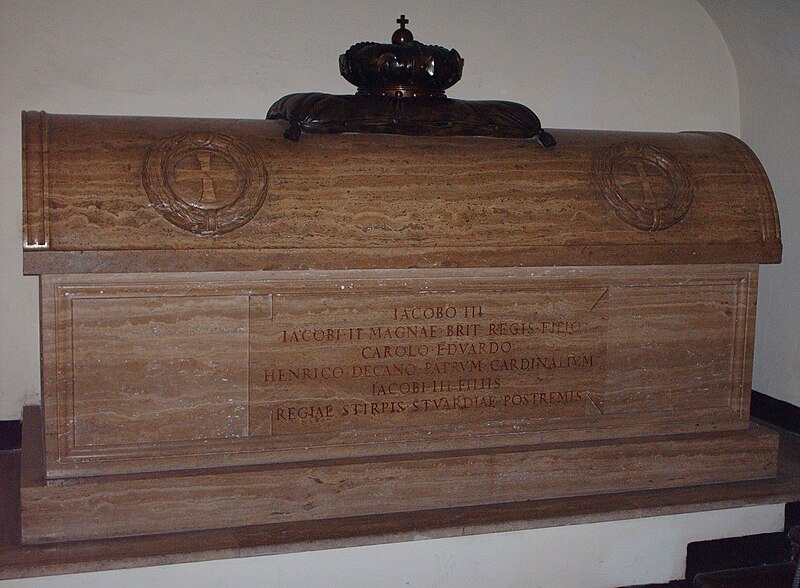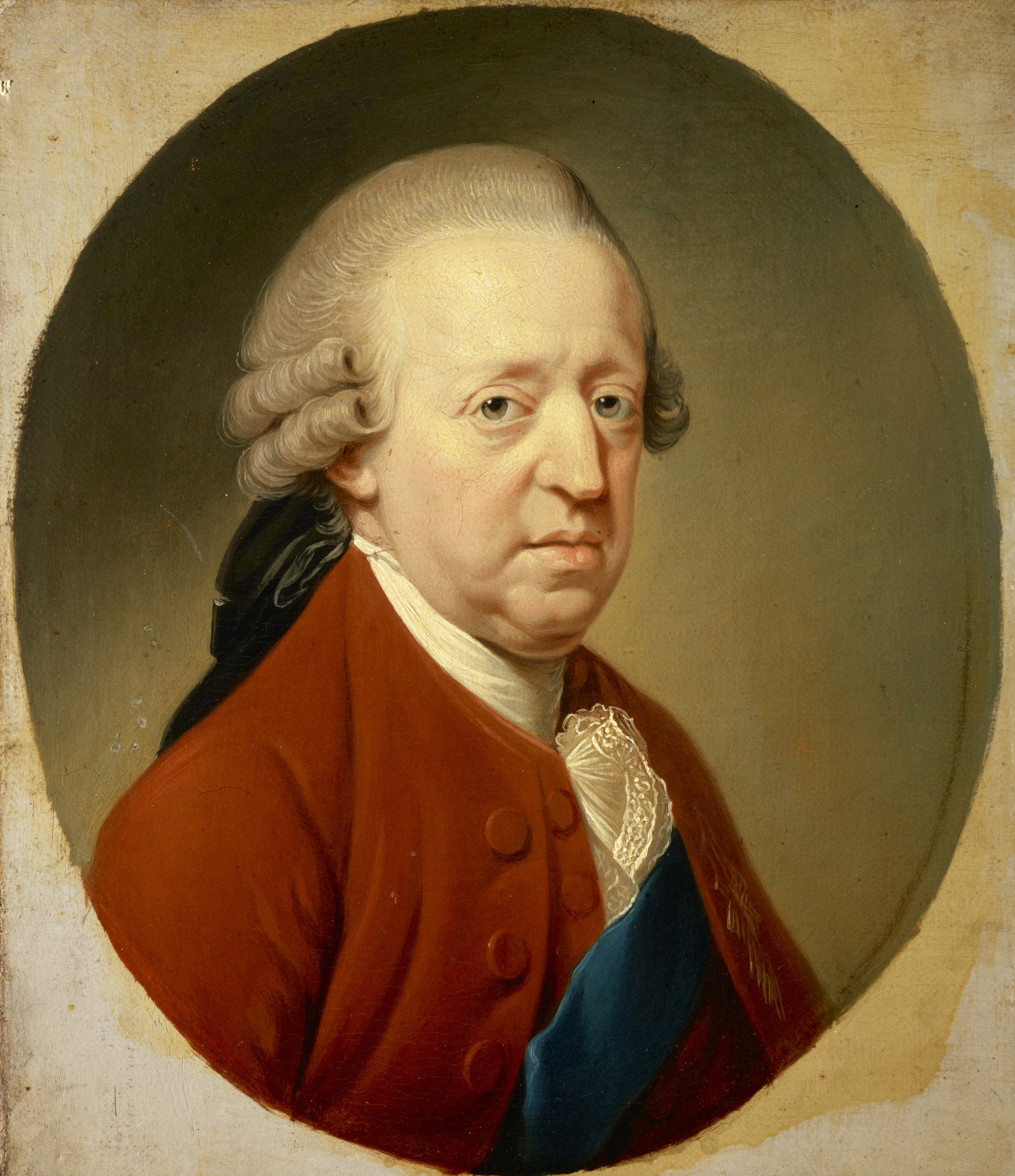by Susan Flantzer © Unofficial Royalty 2016

Photo Credit – Wikipedia
The second child of the four children and eldest daughter of Mary Tudor, daughter of King Henry VII of England, and Charles Brandon, 1st Duke of Suffolk, Lady Frances Brandon was born on July 16, 1517, at Hatfield House in Hertfordshire, England. At the time of her birth, Hatfield House belonged to the Bishop of Ely. Her mother was making a pilgrimage to the shrine of Our Lady of Walsingham in Norfolk, England when she unexpectedly went into labor, so she stopped at Hatfield House to have her baby.
Frances had two brothers and one sister, but only her sister survived childhood:
Although Frances and her siblings were only the children of a duke, they had their mother’s royal blood. They were the grandchildren of King Henry VII of England and the nieces and nephews of King Henry VIII of England, and therefore had claims to the English throne. Frances and her siblings along with their older half-sisters Anne and Mary Brandon, grew up under the supervision of their nurse Anne Kynge at Westhrope Hall in Suffolk, England.
Frances’ father tried to arrange a marriage for her with Henry Howard, Earl of Surrey, eldest son of Thomas Howard, 3rd Duke of Norfolk. However, the marriage proposal was rejected because Frances’ dowry was not large enough. When Frances was 12-years-old, she was betrothed to Henry Grey, 3rd Marquess of Dorset. In 1533, with the permission of her uncle King Henry VIII, Frances married Henry Grey at Suffolk Place, her father’s mansion in Southwark, London. Frances’ wedding was the last public appearance of her mother Mary Tudor. Immediately after the wedding, the already seriously ill Mary went back to Westhorpe Hall where she died on June 25, 1533.
Frances and Henry’s home was Bradgate House in Leicestershire, a seat of the Grey family. Their first two children, a son and a daughter, both died young. They then had three daughters.
- Lady Jane Grey (1537–1554), married Lord Guildford Dudley, no issue; Queen of England from July 10, 1553 – July 19, 1553, executed 1554
- Lady Catherine Grey (1540–1568), married (1) Henry Herbert, 2nd Earl of Pembroke, marriage annulled, no issue; (2) Edward Seymour, 1st Earl of Hertford, had issue
- Lady Mary Grey (1545–1578), married Thomas Keyes, no issue
Three months after his wife’s death, Frances’ father Charles Brandon, 1st Duke of Suffolk, married his ward, 14-year-old Catherine Willoughby, Baroness Willoughby de Eresby in her own right. She had been betrothed to his son Henry Brandon, Earl of Lincoln, but he was too young to marry. Suffolk did not wish to risk losing Catherine’s lands, so he married her himself. Charles Brandon, 1st Duke of Suffolk died in 1545. He had two sons with Catherine Willoughby, Henry, 2nd Duke of Suffolk (1535–1551) and Charles, 3rd Duke of Suffolk (c. 1537–1551), who both died of the sweating sickness within an hour of each other.
As the niece of King Henry VIII, Frances was one of the highest-ranking women at court and often took on ceremonial duties. Together with her cousins who were almost the same age, Princess Mary (Henry VIII’s daughter, later Queen Mary I) and Lady Margaret Douglas (Margaret Tudor’s daughter), she led the funeral procession for her uncle’s third wife Jane Seymour and was also among the ladies that welcomed his fourth wife Anne of Cleves to England. Along with her younger sister Eleanor, her stepmother Catherine Willoughby, and her cousin Margaret Douglas, Frances served as a lady-in-waiting to her uncle’s sixth wife Catherine Parr. This was a great honor and it also gave the opportunity for Frances’ eldest daughter Jane to be introduced in the higher circles at court.
After the death of Frances’ half-brothers Henry and Charles in 1551, the title Duke of Suffolk reverted back to the crown. Since Frances was now the rightful heir to her father, her husband Henry Grey was granted the title Duke of Suffolk “jure uxoris” (by right of his wife). This was not only a social advancement but also improved the family’s financial situation.
Frances was well aware of the role her daughters, especially her eldest daughter Jane, could play in England. Jane was very well educated. She studied Greek and Hebrew with John Aylmer, later Bishop of England, and Italian and Latin with Michelangelo Florio, a former Franciscan friar who converted to Protestantism. In 1547, Jane was sent to live in the household of King Edward VI’s uncle, Thomas Seymour, who married King Henry VIII’s widow, Catherine Parr. Jane lived with the couple until the death of Catherine in childbirth in September 1548 and acted as chief mourner at Catherine’s funeral.
The powerful John Dudley, 1st Duke of Northumberland thought marrying one of his sons to Lady Jane Grey would be a good idea. On May 25, 1553, three weddings were celebrated at Durham Place, the Duke of Northumberland’s London home. Lord Guildford Dudley, the fifth surviving son of the Duke of Northumberland married Lady Jane Grey, Guildford’s sister Lady Katherine Dudley married Henry Hastings, the Earl of Huntingdon’s heir, and Jane’s sister Lady Catherine Grey married Henry Herbert, the heir of the Earl of Pembroke.
As King Edward VI lay dying in the early summer of 1553, the succession to the throne according to the Third Succession Act looked like this, and note that number four in the succession was the Duke of Northumberland’s daughter-in-law.
1) Mary, daughter of Henry VIII and Catherine of Aragon
2) Elizabeth, daughter of Henry VIII and Anne Boleyn
3) Duchess of Suffolk (Lady Frances Brandon), daughter of Mary Tudor
4) Lady Jane Grey, daughter of Frances Brandon
5) Lady Catherine Grey, daughter of Frances Brandon
6) Lady Mary Grey, daughter of Frances Brandon
7) Lady Margaret Clifford, daughter of Countess of Cumberland (born Lady Eleanor Brandon, daughter of Mary Tudor)
King Edward VI’s death and the succession of his Catholic half-sister Mary would spell trouble for the English Reformation. Many on Edward’s Council feared this, including the Duke of Northumberland. What exact role the Duke of Northumberland had in what followed is still debated, but surely he played a big part in the unfolding of what happened. The king opposed Mary’s succession not only for religious reasons but also because of her illegitimacy and his belief in male succession. He also opposed the succession of his half-sister for reasons of illegitimacy and belief in male succession. Both Mary and Elizabeth were still considered to be legally illegitimate.
King Edward composed a document “My devise for the succession” in which he passed over his half-sisters and Frances. Edward meant for the throne to go to Frances’ daughters and their male heirs. Frances and her husband were outraged at her removal from the succession, but after a meeting with the ailing king, Frances renounced her rights in favor of her daughter Jane. Apparently, Jane did not have any idea of what was occurring.
After great suffering, fifteen-year-old King Edward VI died on July 6, 1553, most likely from tuberculosis. On July 9, Jane was told that she was Queen, and reluctantly accepted the fact. She was publicly proclaimed Queen with much pomp after Edward’s death was announced on July 10. Queen Jane made a state entry into the Tower of London. Frances carried her train and the rather short Queen wore raised shoes to give her height. Jane showed some spirit when she refused to allow her husband to be proclaimed king.
The Duke of Northumberland had to find Mary and hopefully capture her before she could gather support. However, as soon as Mary knew her half-brother was dead, she wrote a letter to the Privy Council with orders for her proclamation as Edward’s successor and started to gather support. By July 12, Mary and her supporters had assembled a military force at Framlingham Castle in Suffolk. The Duke of Northumberland set out from London with troops on July 14. The nobility was incensed with Northumberland and the people, for the most part, wanted Mary as their Queen, not Jane. In Northumberland’s absence, the Privy Council switched their allegiance from Jane to Mary and proclaimed her Queen on July 19, 1553. Mary arrived triumphantly into London on August 3, 1553, accompanied by her half-sister Elizabeth and a procession of over 800 nobles and gentlemen.
The Duke of Northumberland was executed on August 22, 1553. Lady Jane Grey and Lord Guildford Dudley were both charged with high treason as was Jane’s father Henry Grey, Duke of Suffolk. They were all found guilty. Queen Mary appeared as if she was going to be lenient, but the Protestant rebellion of Thomas Wyatt the Younger in January of 1554 sealed Jane’s fate, although she had nothing to do with the rebellion. Wyatt’s Rebellion was a reaction to Queen Mary’s planned marriage to the future King Philip II of Spain. Lady Jane Grey and Lord Guildford Dudley were executed on February 12, 1534. The Duke of Suffolk was executed on February 23, 1554.
Frances’ life was now in ruins. Because her husband was a traitor, all his possessions reverted to the Crown. Frances managed to plead with her cousin Queen Mary I to show mercy. Mary agreed that some of the Duke of Suffolk’s property could remain with the family. Frances married her Master of the Horse Adrian Stokes in March of 1555. They had two stillborn children and a daughter who died in infancy. Frances, aged 42, died on November 20, 1559, at her residence Charterhouse in London with her daughters Catherine and Mary at her side. The cost of her funeral was paid by her cousin Queen Elizabeth I. With her daughter Catherine acting as chief mourner, Frances was buried at Westminster Abbey. Four years later, her widower Adrian Stokes had a beautiful tomb and effigy placed over her grave with this epitaph in Latin:
Nor grace, nor splendor, nor a royal name,
Nor widespread fame can aught avail;
All, all have vanished here.
True worth alone survives the funeral pyre and silent tomb.

Tomb of Frances Brandon in Westminster Abbey; Credit – Wikipedia
This article is the intellectual property of Unofficial Royalty and is NOT TO BE COPIED, EDITED, OR POSTED IN ANY FORM ON ANOTHER WEBSITE under any circumstances. It is permissible to use a link that directs to Unofficial Royalty.
Works Cited
Abrufstatistik. “Frances Brandon.” Wikipedia. N.p.: Wikimedia Foundation, Jan. 2008. Web. 30 Oct. 2016.
“Frances Grey, Duchess of Suffolk.” Wikipedia. N.p.: Wikimedia Foundation, 10 Oct. 2016. Web. 30 Oct. 2016.
Susan. “Lady Jane Grey, Queen of England.” British Royals. Unofficial Royalty, 10 July 2013. Web. 30 Oct. 2016.






